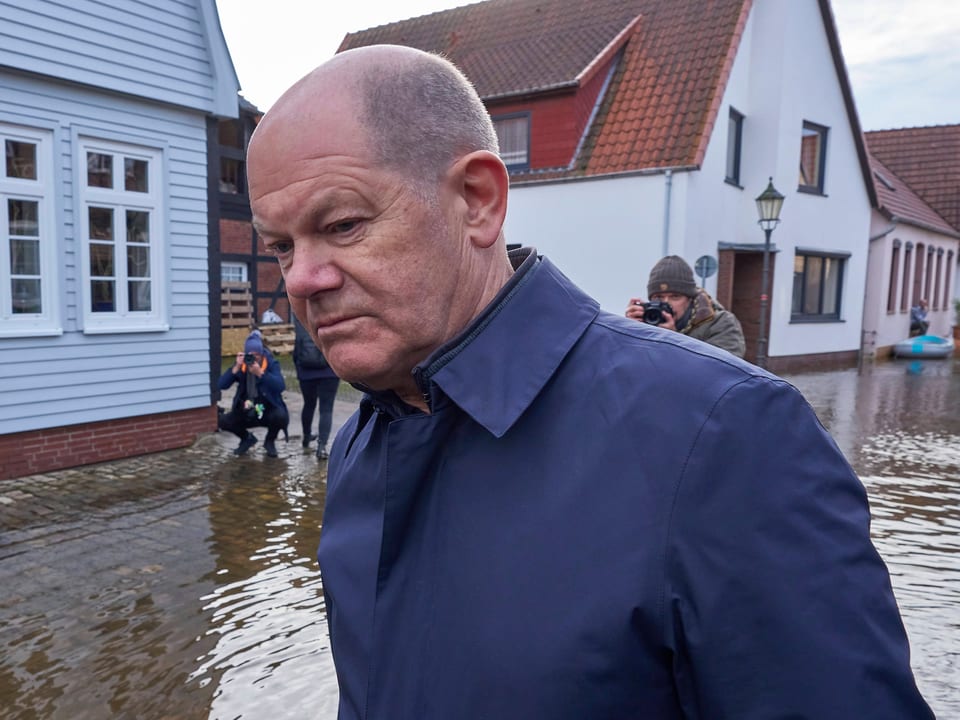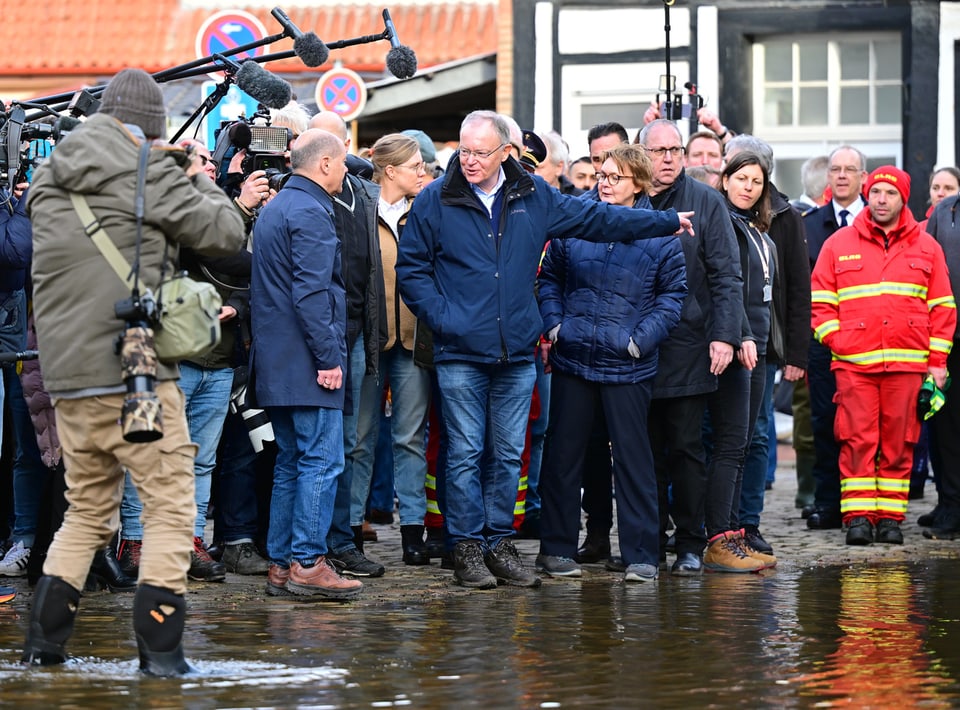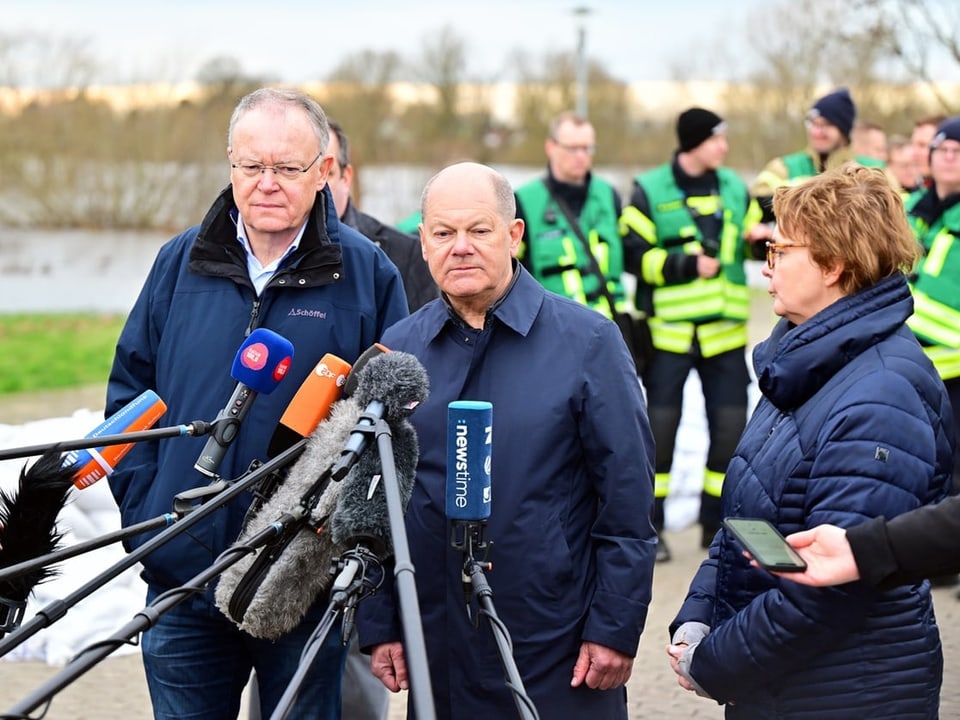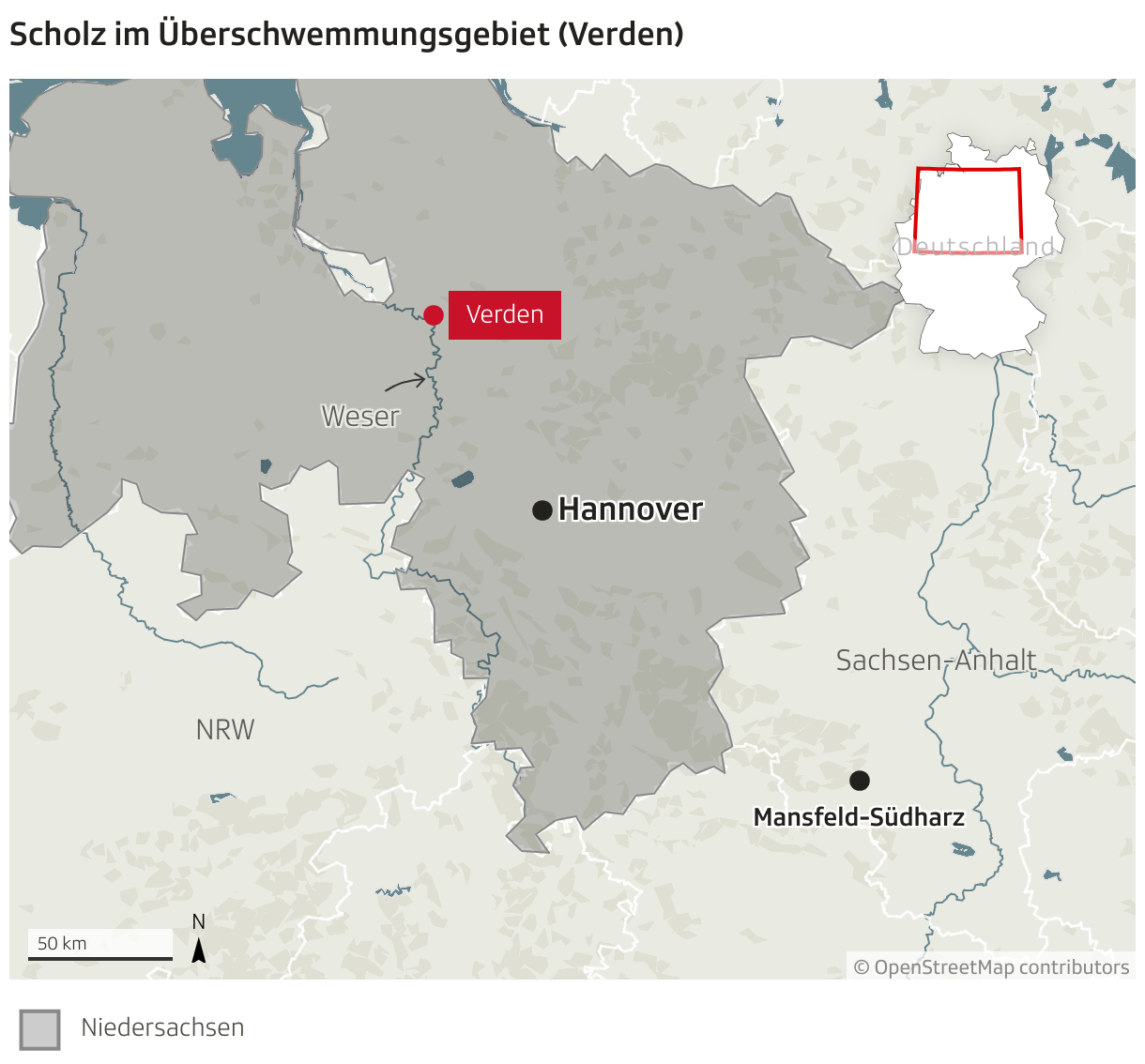- The situation in some of the flood areas in Lower Saxony remains tense.
- According to the authorities, no tightening is initially expected. In the new year, however, river levels could rise again locally.
- German Chancellor Olaf Scholz was there to get an idea of the situation.
After a sightseeing flight, Scholz got out of a helicopter in the morning in the small town of Verden in northwest Germany. The German Chancellor wanted to discuss the situation with his SPD party friends, Lower Saxony’s Prime Minister Stephan Weil and Lower Saxony’s Interior Minister Daniela Behrens as well as firefighters. The Chancellor also wanted to speak to citizens and thank the emergency services.
The weather forecast is favorable. At the turn of the year there will be a short break in the rain with only local showers, said a meteorologist from the German Weather Service. However, the Lower Saxony State Office for Water Management, Coastal and Nature Conservation (NLWKN) announced in its management report that the precipitation was not relevant to floods.
No relaxation yet
According to the NLWKN, the flood peak, i.e. the highest water level during a flood, has been reached in Lower Saxony for the time being. However, there are still elevated water levels, especially in the lower reaches of rivers. It is not yet possible to speak of an easing of the flood situation.
The highest reporting level was still exceeded at numerous gauges – especially on the Aller, Leine, Oker and Mittelweser. The NLWKN expected water levels to remain the same or fall in the affected river areas and tributaries. The Celle district, among others, reported that the situation there was easing somewhat as water levels fell.
Other regions affected
In addition to Lower Saxony, the south of Saxony-Anhalt on the border with Thuringia and areas in North Rhine-Westphalia are also affected by floods. The Mansfeld-Südharz district in Saxony-Anhalt declared a disaster on Saturday. The situation there on the Helme River remained critical. Once a disaster has been determined, the coordination of the defense measures is transferred to the district and supra-local help can also be requested, for example from the Bundeswehr.
In North Rhine-Westphalia there was a slight relaxation at the turn of the year. “Overall, the trend in water levels is declining,” said a spokesman for the North Rhine-Westphalia Ministry of the Environment when asked by the German Press Agency on Saturday.
The water has already damaged several dikes. In Haren in Emsland, emergency services repaired areas with sandbags on Sunday night. The city emphasized that there was no dike breach. In Wathlingen near Celle, parts of a dike were washed out, hundreds of helpers stabilized the dike, which, according to the fire department, is more of a wall. The community lies on the Fuhse, a tributary of the Aller.
This is where we get into severe weather-like and critical areas again.
There shouldn’t be too much rain in Lower Saxony on Monday night or during the rest of the day. There will be heavier rain again on Tuesday and Wednesday. Up to 20 liters per square meter would also fall over large areas, and up to 30 liters in the Harz, said the meteorologist from the German Weather Service. “We’re getting into stormy and critical areas again.” If current predictions are confirmed, there will be another local increase in the new year, the NLWKN said.




